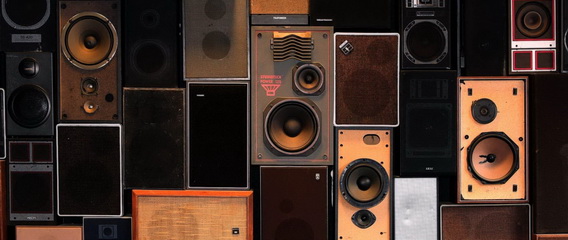For the best sound experience, the ideal loudspeaker placement is usually in a rectangular room with a flat ceiling and the front speakers placed symmetrically at one end. This is all well and good, but what if you don’t have this type of room? What are the options for getting the best sound experience?
Why It Matters
To understand why speaker placement is so important, let’s first look at how rooms affect sound quality. When listening to your audio system, what you are hearing is a combination of direct and reflected sound. Some of what you hear is coming straight from the loudspeaker to your ears, but according to many experts over half of what you are hearing is reflected; sound that starts at the loudspeaker and then bounces off the walls, floor or ceiling before reaching your ears.
The proper balance of direct and reflected sound is important for the overall sound quality. Too much direct sound and the result will be too dry and clinical. Too much reflected sound and vocals and other details can become less distinct.
Start With Symmetry
In a “normal” rectangular-shaped room, without too many door openings, good sound is usually not that difficult to achieve; but when you have vaulted ceilings, L-shaped rooms and other types of irregular shapes, the proper balance can be harder to achieve.
Even if your room is not a perfect rectangle with the speakers at one end, try to have symmetry in your layout. The main front left and right speakers should be the same distance from the primary seating area. The center channel needs to be half way between the front loudspeakers. The surround speakers should also be about the same distance from where you will be listening.
First, set up the system and listen. Then move one or more of the speakers a bit and listen again. Does it sound better, more balanced? Sometimes moving loudspeakers just a little bit can make a fairly large change in the balance and quality of the sound.
Measure by Moving Around
Next, many audio/video receivers and pre-amplifiers have an automated speaker set-up feature. With these you connect a microphone (usually supplied with the receiver) and put it in the primary listening area. Some receivers let you take measurements from several seating positions. You then select the speaker set-up on the receiver and various test tones are sent to speakers. The microphone “listens” to these sounds, both direct and reflected, and makes compensations to the audio to make the best possible fit for the speakers in a particular room. These automated set-up systems have been around for several years and can really fine tune a system.
It’s What We Do
If you aren’t sure about setting up and calibrating your speakers, we can help. We have installed many audio systems in both ideal room configurations and rooms that are very far from perfect from an audio perspective. Our years of experience will ensure that your system will sound great in any room.

